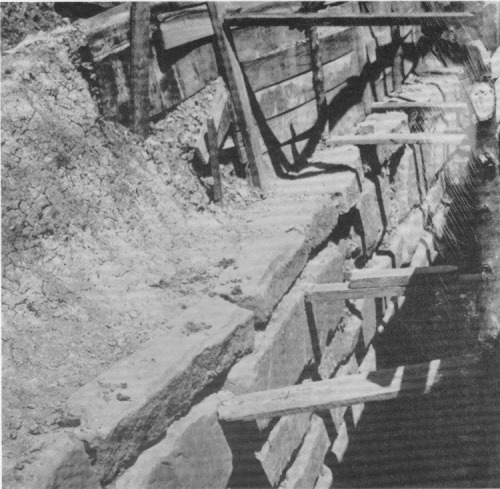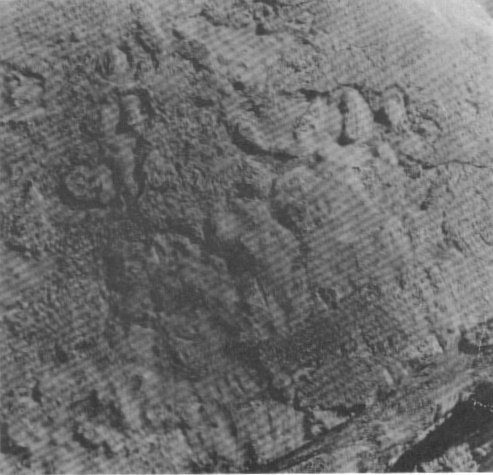





These early photos show a much more architectural nature in the upper portions of the wall which are not evident in the deeper excavations of 1999-2000. These photos also show petroglyphys which are not found so far in any of the wall stones so far excavated. They also show the capping stones and beveling not evident in the lower sections, exposures and displaced stones examined by Schaar, Elwood, Goss and others in other studies of the wall. This has led to the hypothesis that only the upper sections of the wall had been modified by human hands upon preexisting natural features. These sections also do not show unbroken fissures which are evident in the later excavations which can be explained by natural processes. Dr. Glenn also stated that Mr. Daweese with the aid of T.H. Meridith had uncovered a square opening in the wall at a depth of 35 feet two feet square and a little less than two feet thick. They excavated to a total depth of 42 feet but never found the bottom of the massive wall northeast of town on the DaWeese property. This opening presently lies within the wall the shaft which was afterward used as a well. This is most likely the "window" which Count Byron de Prorok examined on one of his two vistits to the walls in 1925. I will present more on the flamboyant archaeologist Prorok in a forthcoming section. Though viewed with a good deal of contempt by many of his contemporaries, Prorok had actually done excavations at Carthage and other North African ancient cities, so his opinion based upon first hand experience cannot be entirely discounted. He stated that based upon his casual examinations, the walls did seem artificial and similar to the ones in North Africa. Unfortunately, Count Prorok never returned to Rockwall to do a more thorough investigation.
All geologists and archaeologists in recent times have concurred with Kelsey and Denton's view that the walls are natural clastic sand dikes formed approximately at the time of the Laramide Orogeny about 80 million years ago based upon fossils from the surrounding shales. There are, however a few of us laymen who have lingering doubts based upon enigmatic features which these photos present.
Material for this article and accompanying photos was taken from a pamphlet reprinted by the Rockwall Historical Foundation in 1992.